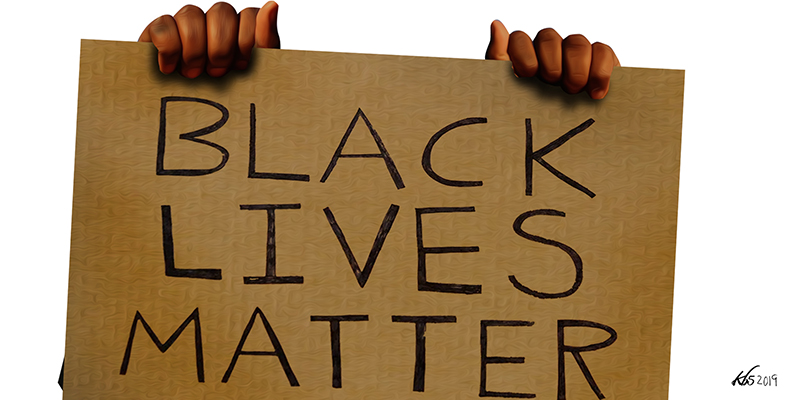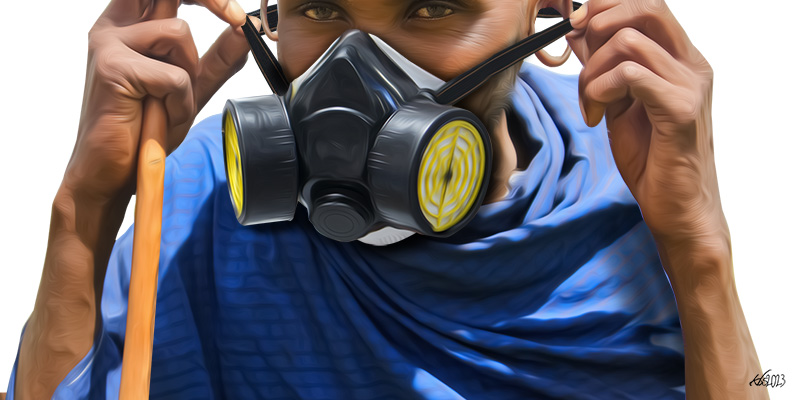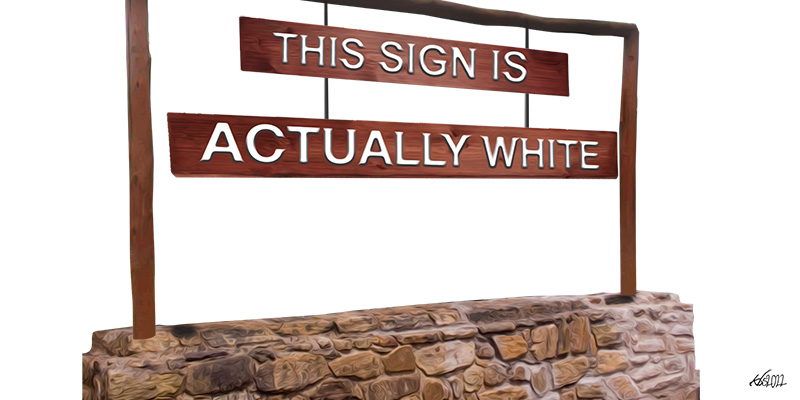Emmett Till, say his name.
Amadou Diallo, say his name.
Trayvon Martin, say his name.
Aiyana Jones, say her name.
Sandra Bland, say her name.
This a small selection of lyrics from “Hell You Talmbout”, a song recorded by Janelle Monáe and Wondaland in 2015 to protest the endemic racialised violence that African-Americans face everyday in encounters with law enforcement. It is a memorialisation of the human beings whose legally-sanctioned homicides have produced searing, horrifying story after story in the American news for decades. Emmett Till was lynched in 1955. Freddie Grey, another of the names in the lyrics, was fatally injured in the custody of Baltimore police in the year this song was released. This song is more than a monument to lives lost to racism and hatred; it is an anthem that is shaping and giving moral force to the Black Lives Matter movement.
Despite its clear call for diversity in mobilising people to fight for recognition of black people’s humanity and the right of African-Americans to live their lives in the context of respect and security that white middle class Americans take for granted, BLM is frequently the target of criticism that it is promoting an exclusionary “black nationalist” agenda.
Black Lives Matter (BLM) was founded in 2013 by three American women of colour – Alicia Garza, Patrisse Cullors, and Opal Tometi – to rally popular resistance against this deadly state-sponsored violence and to build “a world where Black lives are no longer systematically targeted for demise” (blacklivesmatter.com). Formed in the wake of the 2012 death of Trayvon Martin (stalked and shot by a neighbourhood vigilante who was subsequently acquitted) and further radicalised by the demonstrations in Ferguson, Missouri, after the 2014 death of Mike Brown (shot by a police officer who faced no charges), BLM has asserted itself as a champion of what it terms “unapologetic blackness”, and of the need for gender-inclusive, queer-positive, intergenerational community activism on a global scale.
Despite its clear call for diversity in mobilising people to fight for recognition of black people’s humanity and the right of African-Americans to live their lives in the context of respect and security that white middle class Americans take for granted, BLM is frequently the target of criticism that it is promoting an exclusionary “black nationalist” agenda. Opponents, often uninformed and unwilling to engage with BLM’s own stated manifesto, claim that American society should instead dedicate itself to the view that “all lives matter”.
In attempting to stake out this ground, however, BLM’s opponents ignore the obvious point that a movement dedicated to ending state-sanctioned violence against a racially identifiable group is in fact working to make all lives matter. Retreating into false universalism serves only to deflect attention from the justice demands that are being made, demands that have been made by black Americans since the days of the slavery-abolition movement in the mid-19th century and which were thrown into global prominence in Dr. Martin Luther King Jr.’s 1963 “I Have A Dream” speech. (This speech is now widely understood in the United States as the culmination of the Civil Rights Movement, the 1950s-1960s racial justice movement which, in the popular imagination, ended racism in America.) When one considers the many names said in the lyrics of “Hell You Talmbout,” and the news stories behind those lyrics, it becomes obvious that the American popular imagination is quite wrong on that count.
So, what accounts for this belief that racial equality has been achieved in a country in which one is still very much at risk – of physical violence, of psychological violence, of death – if one is moving through the world in a black skin? A sketch of an answer to this paradox of belief in a level playing field that somehow coexists with a pernicious significance of whiteness in ongoing power relations can be found in synthesis of two remarkable Caribbean theorists of race: Frantz Fanon (of Martinique) and Sylvia Wynter (of Jamaica).
Humanity as whiteness
In 1952, Fanon published the first of his major works on the phenomenology of blackness, Peau Noir, Masques Blancs, written while he was doing his residency in France as a doctor of psychiatry. This book was not published in English until 1967 (as Black Skin, White Masks) so it was not an analysis available to Dr. King when, in 1963, he was publicly dreaming that his children would be judged by the content of their character rather than the colour of their skin.
Fanon offers a much more pessimistic view of the opportunities for black thought and being than King does, arguing that the black person trying to assert his or her humanity is cast into “a zone of nonbeing” by a world that equates humanity with whiteness. This is what he means when he writes that the black man’s destiny is a white destiny: the black person (entirely appropriately) wishes to assert himself or herself as human; the African-American wishes to assert himself or herself as American; and the obstacle encountered in each case is that humanity and Americanness have been coded implicitly as white. One can assert one’s humanity, or one’s citizenship – that is, one can fight the social and psychological alienation Fanon theorises throughout this book – but one cannot insulate oneself from encounters in which the other person looks no further than one’s skin.
This destabilisation, this denial of humanity, is what Fanon is referencing in Black Skin, White Masks when he describes an encounter with a (white) French child who cries out in fear to his mother because of “the Negro”. In that moment Fanon experiences a crumbling of his “corporeal schema” (his sense of inhabiting a human body) and its replacement with “a racial epidermal schema” (his realisation that he is being seen, not as inhabiting a human body, nor even as a human inhabiting a black body, but only as a black body). This experience of being human and not having one’s humanity recognised is the basis of the “massive psychoexistential complex” that Fanon hopes to destroy through ruthless analysis of its cultural construction, and that the Black Lives Matter movement hopes to destroy through their embrace of unapologetic blackness.
The struggle to break down the cultural architecture of humanity-as-whiteness is complicated by a phenomenon that Sylvia Wynter traces in an important essay interrogating American race relations in the mid-1990s: the ability of concepts (like who counts as “deviant”) to shift and adapt to contemporary realities while still targeting the same populations. Wynter begins her “open letter” to her fellow black academics with a quotation of Stephen Jay Gould’s assertion that “systems of classification direct our thinking and order our behaviours”. Her overall purpose is to interrogate the role of academics and intellectuals in perpetuating a system of thought that casts black Americans – and black people worldwide – as what she terms “the Conceptual Other” of white (American) culture, a project that she introduces through discussion of the race-relations issues raised by the then-contemporary Rodney King riots.
“How,” she asks, “did they [the police officers who assaulted King, and jurors who subsequently acquitted the officers] come to conceive of what it means to be both human and North American in the kinds of terms (i.e. to be White, of Euroamerican culture and descent, middle class, college-educated and suburban) within whose logic, the jobless and usually school drop-out/push-out category of young Black males can be perceived, and therefore behaved towards, only as the Lack of the human, the Conceptual Other to being North American?”
Calling her fellow intellectuals to account for their/our role in constructing cultural concepts and norms, she further asks: “What have we had to do…with the putting in place of the classifying logic [in which] young Black males can be perceived as being justly shut out from what Helen Fein calls the ‘universe of moral obligation’ that bonds the interests of the Simi Valley jurors…to the interests of the White policemen …?” What it means to be in a “universe of moral obligation”, in Wynter’s explanation of Fein’s work, is to be a “circle of people with reciprocal obligations to protect each other”.
In a world that has changed its laws but not its wealth distribution or economic power structures, discrimination shifts from racial labels to socio-economic ones, but continues to pick out the same marginalised populations.
Black Americans have never been fully, non-provisionally included in that universe, Wynter charges, despite the changes in law and social policy inaugurated by the Civil Rights Movement – the Voting Rights Act of 1965, the Civil Rights Act of 1968, and various Affirmative Action programmes instituted in government hiring and college admissions. Conceptual and linguistic shifts have conspired to keep black people from being seen as unproblematically “inside” the moral-obligation universe. If confronted with the question of whether any given black life matters, most people would agree that of course that life matters. But, at the same time, these same people endorse language and policies that exclude “the criminal”, “the jobless” or “uneducated” and, globally, the populations of “The Third World”.
In a world that has changed its laws but not its wealth distribution or economic power structures, discrimination shifts from racial labels to socio-economic ones, but continues to pick out the same marginalised populations. “In the wake of the Civil Rights Movements, and of the Affirmative Action programmes which incorporated a now new Black middle class into the ‘American Dream,’ the jobless category has been made to bear the weight of the Deviant status that, before the Sixties, had been imposed on all Americans of African and Afro-mixed descent,” explains Wynter. She observes that “it costs $25,000 a year [in 1992 dollars] to keep a kid in prison; which is more than…college. However, for society at large to choose the latter option in place of the former it would mean that the ‘kids’ in question could no longer be ‘perceived’ in N.H.I. [no humans involved] terms.”
One could make similar points about the overall economic benefits (building a bigger pie) that could result from giving African nations greater access to genuinely fair trade agreements and genuinely equitable economic development. Indeed, Wynter notes the parallel between the deliberately marginalised African-American youth and the global populations that Frantz Fanon identified in his other major work on the phenomenology of blackness, The Wretched of the Earth, as les damnés .
Wynter’s overarching summary of her argument is worth quoting in full:
It is only on the basis of the classificatory logic of our present Humanities and Social Sciences, and its related mode of subjective understanding or “inner eyes” generated from the representation of the human as an evolutionarily selected organism, (and who can therefore be more or less human, even totally lacking in humanness as in the case of the N.H.I.), that we can be induced to see all those outside our present “sanctified universe of obligation,” whether as racial or as Jobless Other, as having been placed in their inferiorized status, not by our culture-specific institutional mechanisms but rather by the extra-human ordering of bio-evolutionary Natural Selection.
Her point here is that failure to see black Americans as Americans – indeed, as human beings – is not a failure at the level of cultural institutions (which could be reformed and made more just); it is a foundational epistemological commitment that shapes how we see humanity. It is the unjustifiable, and therefore unasserted, justification for the beliefs that privileged people perpetuate and marginalised people internalise: that those “at the top” (white people, wealthy people, citizens of developed countries) are there because they are better specimens of humanity. They are the evolutionarily selected, the winners. They have not earned their privilege any more than gold has earned its ascribed value, or diamonds. They simply are more valuable. I hope, in putting this point into words, to expose it for the nonsense it is. I hope also that articulating it in this way is making clear the connection of Wynter’s argument to Fanon’s existential analysis of blackness as always embattled in a world that is always white, and the connection to the ways that the Black Lives Matter movement is being framed as unapologetic blackness and being dismissed as exclusionary by “all lives matter” proponents.
Economic fetishisation
Wynter indicts our entire epistemic archive (the stores of knowledge that organise our current epoch) for its “economic ethic,” its “hegemonic economic categories” that cannot see these damnés (be they black/jobless American youths or the Global Poor) as anything other than “throwaway lives” to be given no more consideration than the “discardable environment” precisely because none of them can be, or is being, monetised.
In this worldview that she argues we must reject, if a thing has no price-value, it has no value at all. All of our conventional wisdom is focused on how to bring about increasingly higher standards of living; to speak of anything else is to be foolish, to be naïve, to stop making sense…worse, to be a mouthpiece for Marxism or socialism. The only way out of this economic fetishisation at the core of our worldview is to rewrite our knowledge – to re-envision what counts as the true, the good, and the beautiful as concepts no longer underpinned by economic foundations.
This revisioning of our social world might start by taking seriously the Black Lives Matter commitment to “struggling together and to imagining and creating a world free of anti-Blackness, where every Black person has the social, economic, and political power to thrive”. For BLM, this commitment is a global one; their work is a struggle for a racially-just United States of America, and it is also a sustained outreach to people in other nations “as part of the global Black family”. While there are clearly many aspects of their work that are US-centric, there is also a very real sense in which, aspirationally, BLM’s manifesto mirrors the work that needs to be done on a global scale.
A first step towards this world in which all people have the resources to thrive is represented in initiatives like the global Sustainable Development Goals (articulated by the United Nations in 2015 and committed, like BLM, to a “leave no one behind” agenda) and the pan-African Agenda 2063: The Africa We Want, which envisions a citizen-driven transformation of the entire continent. While neither initiative implicate the complete epistemic transformation that Wynter prescribes, they do trouble the economic fetishisation she critiques in our contemporary world by refocusing our attention on values that are not fully reducible to economic considerations. Both the global and the continent-specific agendas echo Wynter’s rejection of our current practices of throwing away people and throwing away the planet that we need to sustain all our lives, just as they amplify the moral core of Fanon’s decolonisation message: that no one is expendable, ever.
That the United States needs a “Black Lives Matter” movement (and a #MeToo movement, and an Occupy movement) is a depressing indictment of a society that has failed to make the systemic social justice reforms that Martin Luther King called for…
These are not new ideas; the project of building pan-African communities and coalitions has been argued for since the days of post-World War II decolonisation when the world witnessed the attempts of newly independent nations to articulate a policy of non-alignment with the global superpowers of the time, both of which have long since run out of inspiring rhetoric and are now retreating into exclusive focus on the only tools they have left: bullying and force. It is (long past) time to renew that conversation about how to move forward into a geo-political space that takes sustainability, development, and justice seriously.
That the United States needs a “Black Lives Matter” movement (and a #MeToo movement, and an Occupy movement) is a depressing indictment of a society that has failed to make the systemic social justice reforms that Martin Luther King called for, and that both Frantz Fanon and Sylvia Wynter theorised.
But the human energy that is being poured into the BLM movement by the artists and academics who are promoting its goals, but most especially, each unnamed individual in each protesting crowd, people who are giving what would otherwise be their leisure time, their family time, speaks loudly and uncompromisingly of enduring recognition of the need for change. We can, and should, hope for a better world in which Fanon’s “new man” – still struggling to be born – might live a fully human life. We must also, as Fanon urged us, work together to bring that world into being. To borrow from the title of one of Kwame Nkrumah’s essays, the struggle continues.








